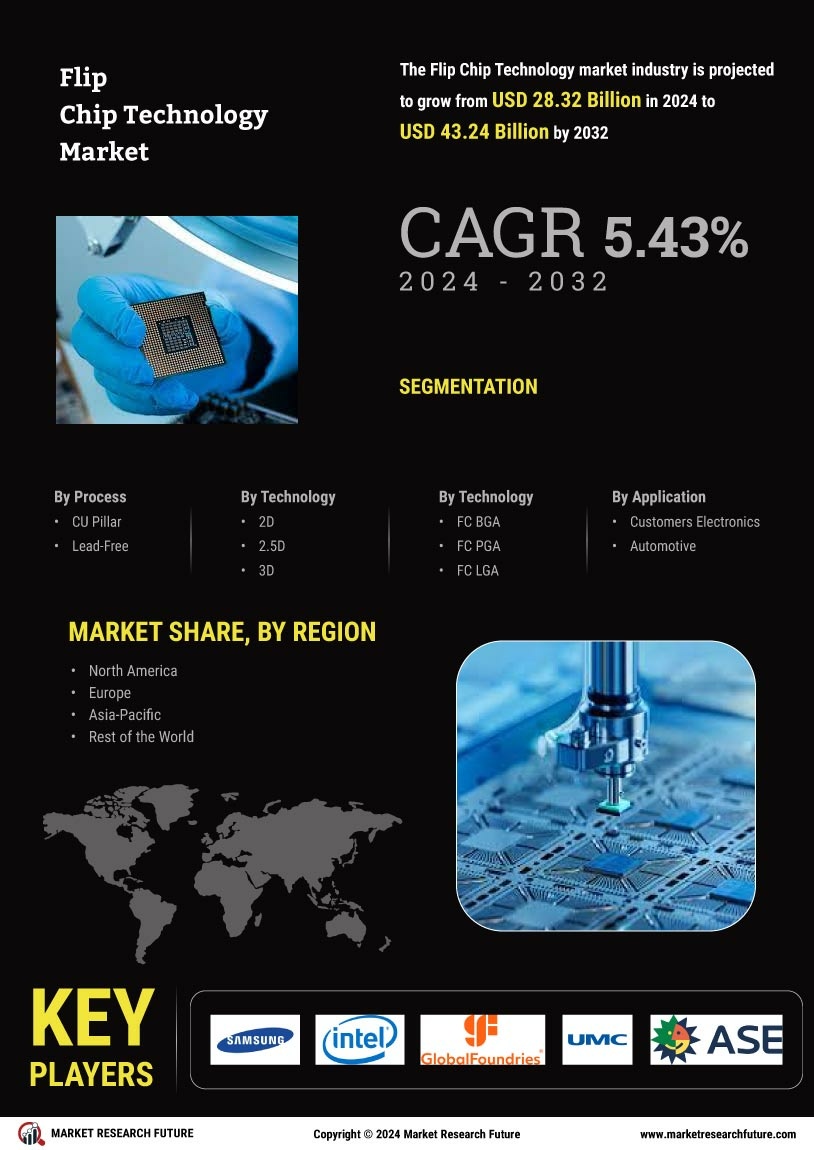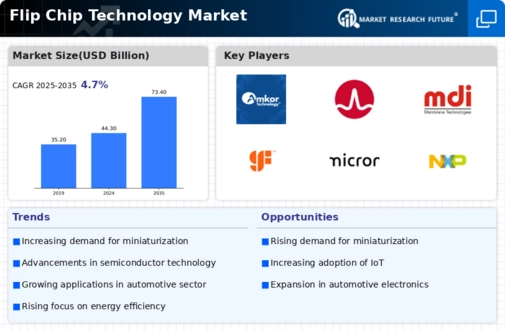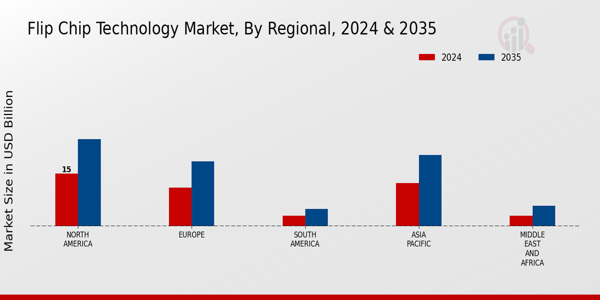Market Growth Projections
The Global Flip Chip Technology Market Industry is projected to experience steady growth over the coming years. With an expected market size of 44.3 USD Billion in 2024 and a forecasted increase to 73.4 USD Billion by 2035, the industry is set to expand at a compound annual growth rate of 4.7% from 2025 to 2035. This growth trajectory reflects the increasing integration of flip chip technology across various sectors, including consumer electronics, automotive, and telecommunications. The market's expansion is indicative of the technology's versatility and its ability to meet the evolving demands of modern applications.
Growth in Consumer Electronics Sector
The Global Flip Chip Technology Market Industry is significantly influenced by the growth in the consumer electronics sector. As the demand for smartphones, tablets, and wearable devices continues to rise, manufacturers increasingly adopt flip chip technology to meet performance and size requirements. This trend is evident as the market is expected to expand to 73.4 USD Billion by 2035, driven by the need for compact and efficient electronic components. The integration of flip chip technology allows for improved signal integrity and reduced power consumption, making it a preferred choice among manufacturers aiming to enhance product offerings in a competitive landscape.
Focus on Energy Efficiency and Sustainability
The Global Flip Chip Technology Market Industry is increasingly focused on energy efficiency and sustainability. As environmental concerns rise, manufacturers are compelled to adopt technologies that minimize energy consumption and reduce waste. Flip chip technology, with its potential for lower power usage and smaller form factors, aligns well with these sustainability goals. This focus not only meets regulatory requirements but also appeals to environmentally conscious consumers. The industry's commitment to sustainable practices is likely to drive innovation and investment, further propelling the growth of flip chip technology in various sectors.
Increasing Adoption in Automotive Applications
The Global Flip Chip Technology Market Industry is witnessing increased adoption in automotive applications, driven by the industry's shift towards electrification and automation. As vehicles become more sophisticated, the need for reliable and efficient electronic components grows. Flip chip technology offers advantages such as improved thermal management and enhanced performance, making it suitable for critical automotive systems. This trend aligns with the broader movement towards smart vehicles, where advanced electronics play a pivotal role. The automotive sector's embrace of flip chip technology indicates a significant growth opportunity, contributing to the overall expansion of the market.
Rising Demand for Advanced Packaging Solutions
The Global Flip Chip Technology Market Industry experiences a notable surge in demand for advanced packaging solutions. This demand is primarily driven by the increasing complexity of electronic devices, which necessitate more efficient thermal and electrical performance. As consumer electronics evolve, manufacturers seek innovative packaging methods to enhance device performance and miniaturization. The market is projected to reach 44.3 USD Billion in 2024, reflecting the industry's response to these technological advancements. Furthermore, the anticipated growth in sectors such as automotive and telecommunications further fuels this demand, indicating a robust trajectory for flip chip technology in the coming years.
Technological Advancements in Semiconductor Manufacturing
Technological advancements in semiconductor manufacturing play a crucial role in shaping the Global Flip Chip Technology Market Industry. Innovations such as 3D packaging and advanced materials are enhancing the capabilities of flip chip technology, enabling higher performance and reliability. These advancements facilitate the production of smaller, more efficient chips that cater to the growing demands of various applications, including high-performance computing and artificial intelligence. The continuous evolution of manufacturing processes suggests a promising outlook for the industry, as it adapts to meet the needs of an increasingly digital world.













